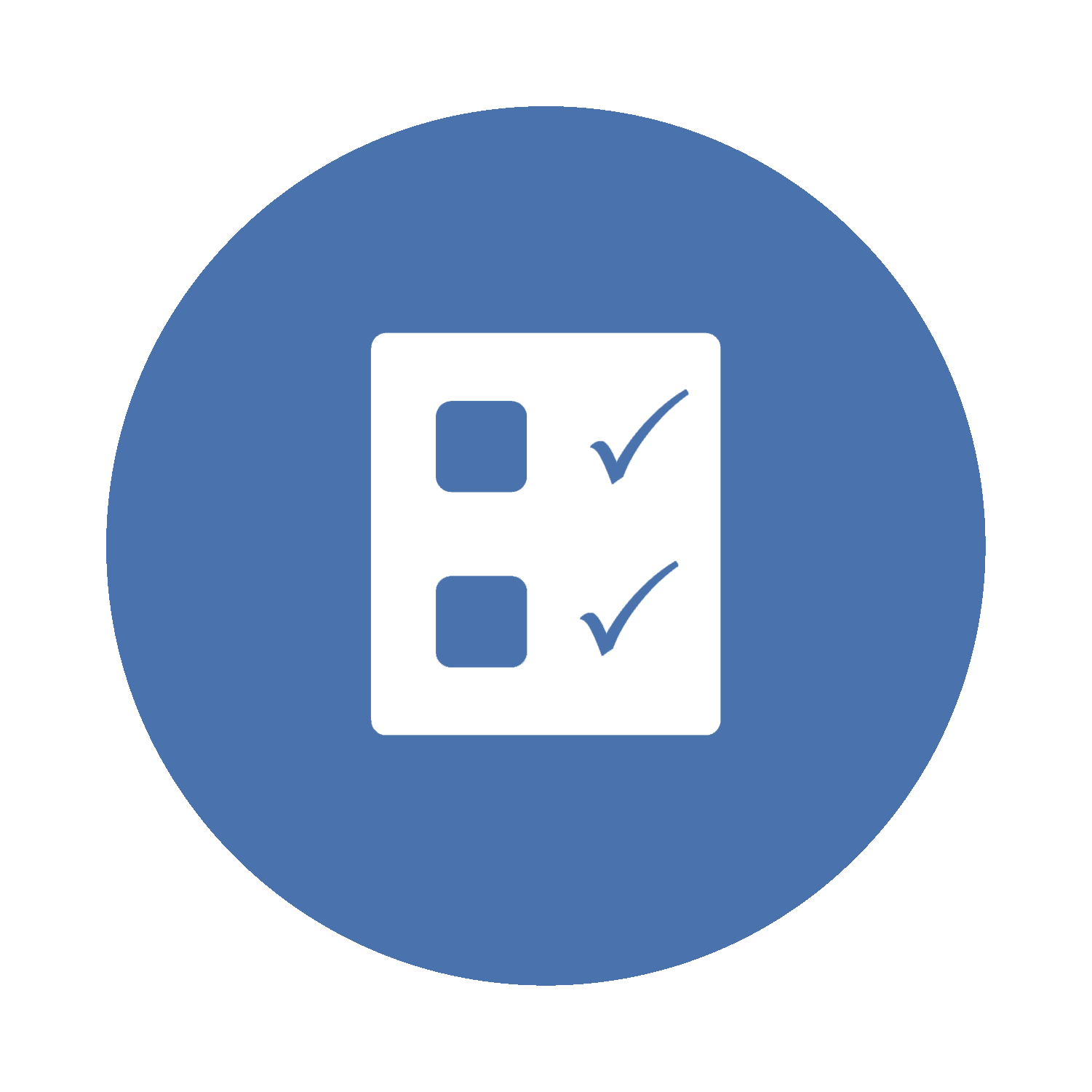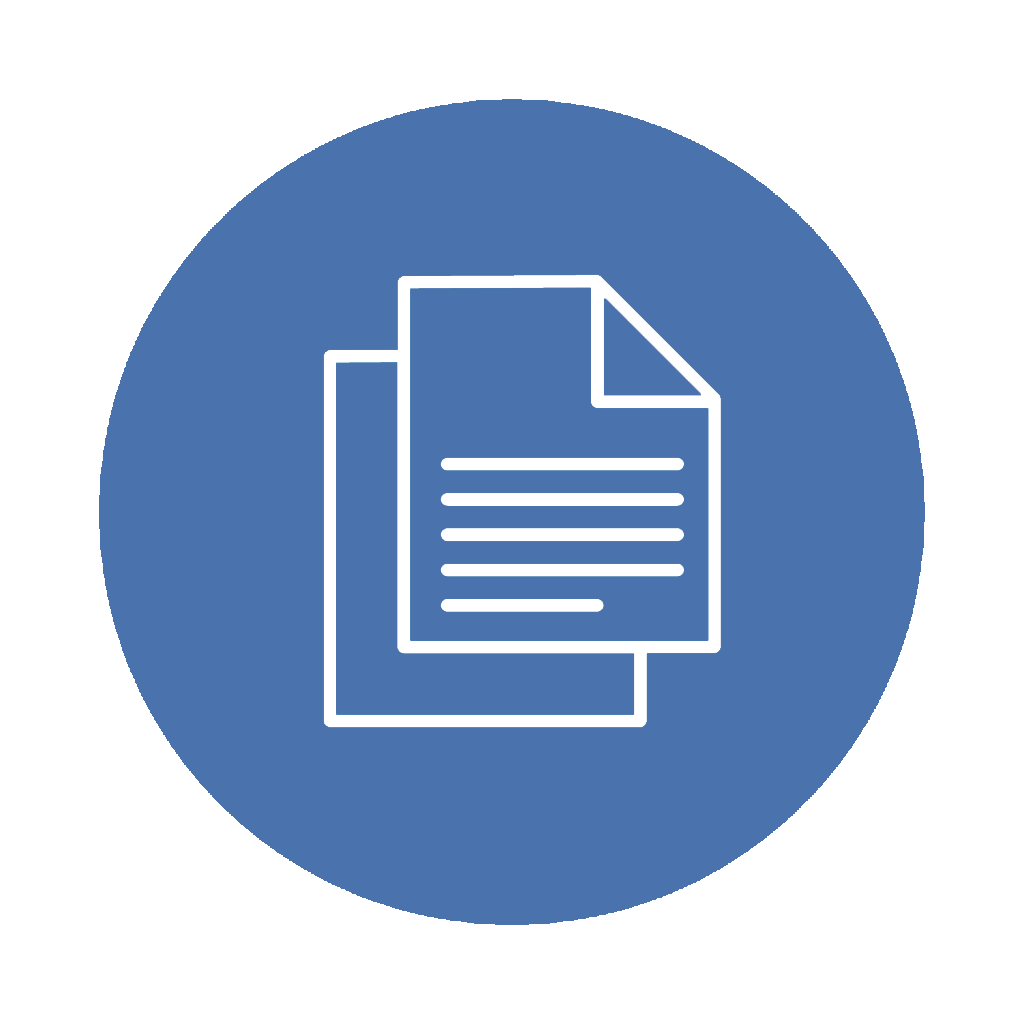02. IS Auditing Standards and Continuous Frameworks
02.03. Computer-Assisted Auditing Techniques (CAATs)

 Briefly reflect on the following before we begin:
Briefly reflect on the following before we begin:
- What are the role and benefits of data analytics in IS Auditing?
- Can you think of the tools and software commonly used in performing IS Auditing data analytics?
- What are some future trends in data analytics that IS Auditors should be aware of and prepared for?
Technology-based tools and computer-assisted Auditing Techniques are pivotal in enhancing audit efficiency and effectiveness. This section will outline the distinction between Computer-Assisted Audit Tools and Techniques (CAATTs) and CAATs, highlighting their respective roles in modern IS Auditing. CAATTs automate some parts of the audit process, improving the auditor’s ability to analyze large datasets and identify anomalies. This automation allows auditors to focus on more complex aspects of the audit, where human judgment and expertise are essential. Next, we will focus on the methodologies used to scrutinize vast data. Data analysis techniques, such as statistical analysis and trend analysis, enable auditors to understand patterns and irregularities in data, while data mining helps uncover hidden patterns and correlations. These techniques are critical in identifying potential areas of risk and non-compliance.
We will also discuss integrating CAATs into audit programs, which involves selecting appropriate tools and designing audit tests that utilize these technologies effectively. A well-structured CAATs-based audit program enhances the scope and depth of the audit, enabling comprehensive coverage of IT systems and processes. We will also discuss specialized auditing software, general-purpose data analysis tools, and customized scripts or queries designed for specific audit tasks as a part of IS Auditing CAATs. The choice of tools depends on the audit objectives, the nature of the IT systems being audited, and the data available for analysis. Lastly, we will explore future developments in auditing tools, such as integrating artificial intelligence and machine learning, and their potential impact on IS Auditing. These advancements are expected to automate audit processes further, enhance data analysis capabilities, and enable more proactive and predictive auditing approaches.
CAATTs vs. CAATs and Their Role in IS Auditing
As mentioned above, Computer-Assisted Audit Tools and Techniques (CAATTs) are a combination of software tools and methods auditors use to analyze and evaluate an organization’s data and IT systems. They encompass a wide range of functionalities, from data extraction and analysis to automated testing of control systems. The ‘techniques’ part of CAATTs refers to the methodologies and approaches used in conjunction with the tools to conduct the audit. These techniques could include statistical analysis, sampling methods, or predictive analytics. The role of CAATTs in IS Auditing is extensive. They enable auditors to handle large volumes of data efficiently, provide capabilities for complex data analysis, and offer a means for auditors to conduct more thorough and effective audits. By using CAATTs, auditors can identify anomalies, trends, or discrepancies in data that might indicate control weaknesses for potential risk areas.
On the other hand, computer-assisted auditing Techniques (CAATs) refer specifically to the software tools used in the auditing process. These tools extract, analyze, and manipulate data from various IT systems. Examples of CAATs include generalized audit software, data analysis software, and other specialized tools designed to assist in the audit process. CAATs play a critical role in IS Auditing by automating manual processes and enabling auditors to focus on more strategic aspects of the audit. These tools are handy in environments where the volume of data is significant, and manually reviewing each transaction is impractical. CAATs can quickly process vast amounts of data, highlighting areas for further investigation.
The primary distinction between CAATTs and CAATs lies in the scope of their functionality. While CAATs are specifically the tools used in the audit process, CAATTs encompass both the tools and the techniques or methods employed. In practice, however, the terms are often used interchangeably, as the devices are rarely used in isolation from the procedures. CAATTs and CAATs are integral to IS Auditing, allowing auditors to conduct more efficient, accurate, and comprehensive audits. They provide the means to analyze complex systems and large data sets, identify potential risk areas, and ensure that an organization’s IT controls function effectively. As technology continues to evolve, the role of these tools and techniques is becoming increasingly central to the auditing process, underscoring their Importance in the field of IS Auditing.
Data Analysis and Data Mining Techniques in IS Auditing
Data analysis and mining techniques allow IS auditors to extract valuable insights from large datasets, identify trends, detect anomalies, and make informed decisions. The integration of these techniques into IS Auditing is a testament to the evolving nature of the field, adapting to the challenges presented by vast amounts of digital data.
Data analysis involves systematically examining datasets to conclude the information they contain. This process is fundamental in evaluating the performance, efficiency, and compliance of IT systems and processes. IS Auditors use various data analysis techniques, including the following:
| Technique | Description | Example |
|---|---|---|
| Descriptive Analysis | This involves summarizing and describing various aspects of data, such as averages, variances, and frequencies. It helps auditors understand the baseline characteristics of the data. | An IS auditor uses descriptive analysis to summarize historical data from an organization’s network security logs. This analysis might reveal patterns in data traffic, such as peak usage times or frequent access from specific locations. The auditor can present this information in easily digestible formats, like graphs or charts, providing a clear overview of network activity over a specified period. |
| Diagnostic Analysis | This technique investigates specific issues or anomalies identified during the descriptive analysis. It involves more in-depth exploration to understand the causes of particular patterns or irregularities. | Suppose an auditor notices an anomaly in transaction volumes from the descriptive analysis. Using diagnostic analysis, they dig deeper into the data to identify the cause of this irregularity. They might analyze user access logs, transaction timestamps, and system messages when the anomaly occurred. This helps determine whether it was due to a system glitch, unauthorized access, or a legitimate business reason. |
| Predictive Analysis | Leveraging statistical models and forecasting techniques, predictive analysis helps auditors anticipate potential future risks or issues based on historical data trends. | In predictive analysis, the auditor uses historical data to forecast future trends or identify potential risks. For instance, they might analyze past cases of security breaches and use machine learning algorithms to identify patterns or characteristics that could predict future breaches. This analysis helps the organization proactively strengthen its defences against potential vulnerabilities. |
| Prescriptive Analysis | This advanced form of analysis suggests possible courses of action. It helps in decision-making by evaluating the potential impact of different decisions or actions. | Prescriptive analysis involves recommending actions based on the insights from predictive analysis. For instance, if predictive analysis suggests a high risk of data breaches in certain departments, the auditor might recommend specific security protocols or software updates. They could also offer employee training programs on data security tailored to the areas where the predictive analysis indicated the highest risk. |
On the other hand, data mining goes a step further than traditional data analysis by using sophisticated algorithms to discover patterns and relationships in large datasets that might be later apparent. Fundamental techniques in data mining include the following:
| Technique | Description | Example |
|---|---|---|
| Association Mining | This technique identifies interesting associations or relationship patterns among large data items. It helps uncover hidden patterns that could indicate control weaknesses or fraud. | An IS auditor uses association rule mining to uncover relationships between system access behaviours. For instance, they might discover a strong association between access to sensitive financial data and subsequent access to external file-sharing sites. This insight can help identify risky behaviours or potential data exfiltration activities that require further investigation. |
| Classification | Classification algorithms categorize data into different classes. This can be used in Auditing to classify transactions into normal and suspicious categories. | Classification techniques can categorize transactions or user activities into normal and suspicious categories. For instance, an auditor might train a classification model with historical audit data to automatically flag transactions that deviate from typical patterns. This can help quickly identify potential fraud or policy violations for further examination. |
| Clustering | Clustering involves grouping objects so that objects in the same group are more like each other than those in other groups. This can help segment data into meaningful clusters for deeper analysis in IS auditing. | Clustering can be applied to group similar data points without predefined categories. An auditor might use clustering to group users based on system usage patterns. This could reveal groups of users with unusual behaviour, such as accessing the system at odd hours or performing an unusually high volume of data queries, which could indicate insider threats or compromised accounts. |
| Anomaly Detection | This technique is used to identify unusual patterns that do not conform to expected behaviour. It is instrumental in fraud detection and identifying outliers that may warrant further investigation. | Anomaly detection is crucial for identifying outliers in data that may signify issues like security breaches or system failures. An IS auditor might use anomaly detection algorithms to monitor network traffic or transaction volumes, flagging any activity that significantly deviates from the established norm. For example, detecting a sudden spike in data download volumes could alert auditors to a potential data breach. |
Data analysis and data mining enhance the auditor’s ability to identify risk areas, detect fraud, and assess the effectiveness of controls. Moreover, they contribute to more informed decision-making and a more robust understanding of the overall health of the IT systems and processes.
CAATs-based IS Audit Programs
Developing CAATs-based audit programs is a detailed process that significantly enhances IS Audits’ efficiency, accuracy, and comprehensiveness. It involves several critical steps, each requiring meticulous attention to ensure the effective integration and utilization of Computer-Assisted Auditing Techniques. A standard CAATs-based audit program is developed as follows:
- Stage 1. IT Environment Assessment & Risk Analysis
- A CAATs-based audit program starts with an in-depth assessment of the organization’s IT environment, covering an understanding of the IT infrastructure, software applications, network systems, and data management practices. IS Auditors conduct a risk analysis to identify potential areas of vulnerability within the IT systems, focusing on aspects such as data integrity, security, and compliance risks. This forms the foundation of the audit program, guiding the selection of appropriate CAATs.
- Stage 2. Selection of Suitable CAATs
- The selection of CAATs is based on the specific needs and complexities of the IT environment. Factors influencing this selection include the type and volume of data, the IT systems in use, and the specific audit objectives. IS Auditors may choose from various CAATs, such as generalized audit software, data analytics tools, and specialized network analysis and cybersecurity assessment programs. The compatibility of these tools with the organization’s systems and the ability to handle large datasets are critical considerations.
- Stage 3. Definition of Audit Objectives and Scope
- Defining clear and precise audit objectives is crucial. The objectives should align with the identified risks and overall organizational goals. The audit scope delineates the extent and boundaries of the audit process. It includes identifying the key areas to be audited, the depth of the examination, and the specific aspects of IT controls to be evaluated. The scope is instrumental in focusing the audit effort and ensuring resource optimization.
- Stage 4. Detailed Planning of Audit Tests
- This stage involves the detailed planning of specific audit tests to be conducted using CAATs. IS Auditors design these tests to detect anomalies, assess compliance with policies and regulations, and evaluate the effectiveness of IT controls. The planning includes determining the data sources, the methodologies for data analysis, and the criteria for assessing findings. Complex audits may require different tests, each tailored to specific aspects of the IT environment.
- Stage 5. Data Acquisition and Preparation
- Acquiring and preparing the correct data is a critical step. Auditors must ensure that they have access to accurate, relevant, and complete data sets. Data extraction involves pulling data from various sources, including databases, application systems, and log files. The preparation phase may include data cleansing, normalization, and formatting to ensure consistency and compatibility with the chosen CAATs.
- Stage 6. Execution of Audit Tests and Analysis
- With the data prepared, auditors execute the planned tests. This Execution involves running the data through the selected CAATs and monitoring the process for any issues or anomalies. In the analysis phase, auditors interpret the results, looking for patterns, trends, or irregularities that indicate potential problems or areas of concern. This stage requires a blend of technical skills and professional judgment to understand and assess the findings accurately.
- Stage 7. Documentation and Reporting of Findings
- Thorough documentation throughout the audit process is essential. This documentation includes records of the tests performed, the methodologies used, and the results obtained. Reporting involves presenting the findings concisely and understandable. The use of CAATs should be articulated, explaining their role in arriving at the audit conclusions.
- Stage 8. Continuous Improvement of the Audit Program
- Post-audit, the CAATs-based audit program should be reviewed for effectiveness and efficiency. This review includes evaluating the suitability of the selected CAATs, the data analysis’s adequacy, and the findings’ relevance. Feedback from this review feeds into the continuous improvement of the audit program, ensuring its effectiveness and relevance in future audits.
From assessing the IT environment to executing sophisticated data analyses, each step in developing a CAATs-based audit program is critical in leveraging technology to its fullest potential to conduct thorough and effective IS Audits. As technology continues to evolve, the role of CAATs in IS Auditing will become increasingly important, underscoring the need for auditors to stay adept in these techniques.
Standard Tools and Applications Used in CAATs
Various tools and software can be employed while implementing Computer-Assisted Auditing Techniques (CAATs) to enhance the efficiency and effectiveness of IS Auditing, each offering unique functionalities tailored to different aspects of Auditing. The choice of these tools is critical and should align with the specific requirements of the audit, the nature of the IT systems under review, and the data involved. Let us explore select tools and software commonly used in CAATs and their applications in IS Auditing.
Generalized Audit Software (GAS)
Generalized Audit Software, such as ACL, IDEA, and SAS, allows auditors to perform various data analysis tasks. These tools can access and analyze data from different sources and formats, making them versatile for multiple audit scenarios. GAS can perform data extraction, sorting, comparison, and stratification tasks. They are handy for sampling, identifying anomalies, and conducting statistical analyses.
Example: An auditor might use ACL to extract and examine financial transaction data from an organization’s database, enabling them to identify discrepancies or anomalies that could indicate errors or fraud.
Data Analysis and Visualization Tools
Data analysis tools like Microsoft Excel, Tableau, and Power BI are widely used for their data manipulation and visualization capabilities. These tools enable auditors to analyze large datasets, create pivot tables, and generate insightful charts and graphs. Visualization aids in presenting complex data in an easily understandable format, helping identify trends, patterns, and outliers.
Example: An IS auditor might use Tableau to create interactive dashboards representing complex audit findings, like user access to sensitive information patterns, making it easier for stakeholders to understand and act upon these insights.
Continuous Monitoring and Auditing Software
Tools like CaseWare Monitor and Inflo are designed for continuous Auditing and monitoring.They automate the collection and analysis of data over time, providing real-time insights into system performance and anomalies. These tools help in proactive risk management by continuously reviewing controls and transactions.
Example: An auditor might set up rules and alerts within SAP ERP to continuously monitor transactions for signs of irregularities, such as duplicate payments, thereby enabling real-time detection and response to potential issues.
Specialized Auditing Tools
Specialized tools are designed for specific audit areas. For instance, network security auditing tools like Nmap and Wireshark are used to assess vulnerabilities and analyze network traffic. Similarly, devices like SQLmap are used to test database security, while Nessus can be employed to scan vulnerabilities.
Example: An IS auditor could use Netwrix Auditor to track unauthorized changes to system settings or access sensitive files, helping maintain integrity and security.
Scripting Languages and Custom Tools
Scripting languages such as Python and R are increasingly popular in IS Auditing. They offer flexibility to create custom scripts for specific audit tasks, such as data scraping, log analysis, or custom data analytics. These tools require more technical expertise but provide tailored solutions for complex audit scenarios.
Example: A Python script could be written to automatically gather and consolidate log files from different systems, aiding in a faster and more efficient analysis of user activities across the network.
Enterprise Resource Planning (ERP) System Auditing Tools
Tools specific to auditing ERP systems, like SAP or Oracle, assess the controls within these systems. They analyze user access, transaction data, and system configuration to ensure the ERP systems are secure and function as intended.
Example: An IS auditor might use tools specific to an ERP system, like SAP Audit Management, to examine user roles and permissions in an ERP system, ensuring they align with the organization’s internal controls and segregation of duties policies.
Cloud Auditing Tools
As more organizations move to cloud-based solutions, tools for auditing cloud environments have become essential. These tools assess the security and compliance of cloud services, including configuration management, access controls, and data encryption.
Example: An auditor can use cloud-specific tools such as AWS CloudTrail or Azure Monitor to track and review user actions and resource changes in the cloud, ensuring compliance with policies and detecting potential security incidents.
The landscape of tools and software for CAATs is vast and diverse, catering to the multifaceted nature of IS Auditing. The selection of appropriate tools is crucial and depends on the audit’s objectives, the nature of the systems under review, and the auditor’s expertise. These tools enhance audits’ efficiency and effectiveness, enabling auditors to handle complex data and provide deeper insights into the IT systems they audit. As technology evolves, so does the arsenal of tools at the disposal of IS Auditors, highlighting the need for continuous learning and adaptation in this dynamic field.
Future Trends in CAATs
The landscape of Computer-Assisted Auditing Techniques (CAATs) is continuously evolving, driven by advancements in technology and changing audit environments. As we look to the future, several emerging trends are expected to shape the development and application of CAATs in IS Auditing. These trends reflect technological advancements and auditors’ changing needs and challenges in a digitalized world.
One of the most significant future trends in CAATs is the integration of Artificial Intelligence (AI) and Machine Learning (ML). These technologies can transform the audit process, enabling more sophisticated data analysis, predictive modelling, and anomaly detection. AI algorithms can automate complex data processing tasks, analyze unstructured data, and provide insights that would be difficult to obtain manually. Machine Learning can enhance continuous Auditing by learning from data over time, improving the accuracy and effectiveness of audit tests. Similarly, blockchain technology is expected to play a role in enhancing the integrity of audit trails. By using blockchain, auditors can have a tamper-proof, chronological record of transactions, which is crucial for auditing financial and operational data. This technology could revolutionize how auditors verify the completeness and accuracy of transaction records, particularly in industries where security and transparency are paramount.
Cloud-based auditing tools are becoming increasingly important as more organizations migrate to cloud environments. These tools are designed to audit cloud infrastructure, services, and operations. They provide scalability, flexibility, and access to sophisticated auditing capabilities without the need for significant upfront investment in software infrastructure. Continuous Auditing and monitoring are set to become more prevalent, driven by the need for real-time insights and proactive risk management. Future CAATs will likely offer more sophisticated continuous auditing capabilities, enabling auditors to analyze transactions and controls on an ongoing basis and respond swiftly to potential issues.
Auditing these devices and the data they generate will become a crucial part of IS Auditing with the proliferation of IoT devices. Future CAATs will need to address the unique challenges posed by IoT, such as the vast volume of data, the diversity of devices, and security concerns. As cyber threats evolve, CAATs will increasingly focus on cybersecurity auditing. Tools will be developed to assess the effectiveness of cybersecurity controls, detect breaches, and evaluate the organization’s resilience to cyber-attacks. Lastly, the Importance of data visualization in Auditing is growing, and future CAATs are likely to include more advanced visualization tools. These tools will allow auditors to present complex data analyses in an intuitive, easily understandable format, making it more straightforward to identify trends, outliers, and patterns. Enhanced visualization capabilities will aid in communicating audit findings more effectively to stakeholders.
The future of CAATs in IS Auditing is dynamic and promising, with technological advancements opening new possibilities for audit efficiency, effectiveness, and scope. As these trends develop, auditors must adapt and enhance their skills to leverage these new technologies, ensuring their auditing practices remain relevant and robust in a rapidly changing digital environment. The evolution of CAATs signifies a shift towards more proactive, intelligent, and comprehensive auditing approaches, fundamentally transforming the role and impact of IS Auditing in the years to come.
 In the Spotlight
In the Spotlight
For additional context on the role of data analytics in IS Auditing, please read the article “Advanced Data Analytics for IT Auditors” [opens in new tab].
Spiros, A. (2016). Advanced data analytics for IT auditors. ISACA Journal, 6. https://www.isaca.org/resources/isaca-journal/issues/2016/volume-6/advanced-data-analytics-for-it-auditors
 Key Takeaways
Key Takeaways
Let’s recap the key concepts discussed in this section by watching this video.
Source: Mehta, A.M. (2023, December 6). AIS OER ch 02 topic 03 key takeaways [Video]. https://youtu.be/DoO5x1etV3Q
 Knowledge Check
Knowledge Check
 Review Activity
Review Activity
As discussed in this section, data analysis involves systematically examining datasets to conclude the information they contain. In contrast, data mining goes further by using sophisticated algorithms to discover patterns and relationships in large datasets that might be later apparent.
For each of the following activities performed by an IS Auditor, determine whether it is an example of a “data analysis” or a “data mining technique.” Explain your answer.
- In monitoring an organization’s network traffic, an IS auditor uses anomaly detection techniques to identify outliers in data traffic patterns. For instance, detecting an unexpected increase in outbound traffic late at night from a specific department’s server could signal a potential data breach, triggering an immediate investigation.
- An IS auditor uses association rule mining to analyze patterns in user access logs. They discover a strong correlation between access to confidential project files and subsequent data transfers to external drives. This association could indicate potential data leakage scenarios, prompting further investigation into these activities.
- In auditing a company’s procurement system, the auditor uses classification algorithms to categorize procurement transactions into ‘normal’ and ‘suspicious’ based on attributes like transaction amount, vendor, and frequency. This helps quickly identify transactions that may warrant further investigation for potential fraud or policy violations.
- An IS auditor employs clustering to analyze user behaviour on the company’s internal network. By grouping users based on similarities in access patterns and file usage, the auditor can identify clusters of users exhibiting anomalous behaviour, such as accessing sensitive data unusually frequently, which might indicate insider threats or compromised accounts.
- An IS auditor reviews the log data of an organization’s network security system. They use descriptive analysis to calculate the average number of login attempts per user over a month and identify the most frequently accessed systems. This information helps the auditor understand standard user behaviour and identify baseline patterns in the data, which is crucial for subsequent analyses.
- During an audit of financial transactions, the auditor observes an unusual transaction spike on certain days using descriptive analysis. Employing diagnostic analysis, the auditor investigates these anomalies further by examining the details of transactions conducted on those days, user access logs, and system messages to determine the cause of these irregular transaction volumes. This might reveal system errors, unauthorized access, or legitimate business activities occurring on those days.
- An IS auditor uses historical data of security incidents and breaches within an organization to predict future security risks. The auditor can identify patterns and trends that suggest potential vulnerabilities by applying statistical models and forecasting techniques. This predictive analysis helps the organization proactively address these security gaps before they lead to incidents.
- After identifying high-risk areas in the IT infrastructure through predictive analysis, the IS auditor uses prescriptive analysis to recommend specific actions. For instance, if a predictive model suggests a high likelihood of phishing attacks targeting specific departments, the auditor might recommend tailored cybersecurity training, enhanced email filtering technologies, and more frequent security audits in those areas.
Specialized software and programs used by auditors to facilitate the audit process and assist in the analysis and testing of an organization's financial records, systems, and internal controls.
Systematic examination of datasets to conclude the information they contain, fundamental in evaluating IT systems and processes.
This involves summarizing and describing various aspects of data, such as averages, variances, and frequencies. It helps auditors understand the baseline characteristics of the data.
This technique investigates specific issues or anomalies identified during the descriptive analysis. It involves more in-depth exploration to understand the causes of particular patterns or irregularities.
Leveraging statistical models and forecasting techniques, predictive analysis helps auditors anticipate potential future risks or issues based on historical data trends.
This advanced form of analysis suggests possible courses of action. It helps in decision-making by evaluating the potential impact of different decisions or actions.
This technique identifies interesting associations or relationship patterns among large data items. It helps uncover hidden patterns that could indicate control weaknesses or fraud.
Classification algorithms categorize data into different classes. This can be used in Auditing to classify transactions into normal and suspicious categories.
Clustering involves grouping objects so that objects in the same group are more like each other than those in other groups. This can help segment data into meaningful clusters for deeper analysis in IS auditing.
This technique is used to identify unusual patterns that do not conform to expected behaviour. It is instrumental in fraud detection and identifying outliers that may warrant further investigation.
Techniques used by auditors to identify fraudulent activities within an organization.
Allows auditors to perform various data analysis tasks by accessin and analyzing data from different sources and formats, as well as performing data extraction, sorting, comparison, and stratification tasks.
Data analysis tools enable auditors to analyze large datasets, create pivot tables, and generate insightful charts and graphs.
Tools like CaseWare Monitor and Inflo are designed for automating the collection and analysis of data over time, providing real-time insights into system performance and anomalies.
Specialized tools are designed for specific audit areas such as assessing vulnerabilities and analyze network traffic or testing database security or scanning vulnerabilities.
Scripting languages that offer flexibility to create custom scripts for specific audit tasks, such as data scraping, log analysis, or custom data analytics.
A fundamental control principle that prevents error and fraud by ensuring that no single individual has control over all aspects of any significant transaction.

